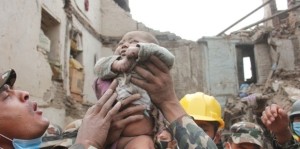On April 24th, 2015, I successfully defended my dissertation proposal for conducting ethnographic fieldwork on pilgrimage and ritual practice in Nepal. Less than 24 hours later, a massive 7.8 magnitude earthquake struck, destroying significant sections of Kathmandu, Bhaktapur, and many villages throughout Sindhupalchok, Dolakha, Rasuwa, Nuwakot, Dhading and Gorkha Districts. As of today, at least 6,204 people are reported dead and over 14,000 have been injured. Many more still lack adequate food, water, and shelter. Within hours, many of my friends and colleagues had contacted me. “Was everyone I knew alright?” “Was my research still possible?” and perhaps even more saliently…”Was I still going to Kathmandu?”
The answer is yes. My plans to fly to Kathmandu on June 1st were made months ago. However, the initial project called for only a few days in the capital city before trekking westward to Mustang District where the bulk of my research would take place. Mustang was lucky. The people and temples and villages there were spared the worst of the tremors and my main fieldsite, the village of Ranipauwa and the temple of Muktinath-Chumig Gyatsa all survived the earthquake without casualties. Hours after the news reports started rolling in, I was also grateful to hear from Muktinath Foundation International (located in Amsterdam) that they had also successfully made phone contact with the Muktinath nun’s retreat monastery in Kathmandu. The nuns and their families all survived and the monastery, blessedly, still stands.
But the context of my work has shifted. Arriving less than 4 weeks after the disaster, my work will not only still be possible but more timely than ever. Undoubtedly, things in Nepal will change drastically in the coming months but ethnographic fieldwork is nothing if not accommodating of sudden changes in focus, the fluctuating nature of human experience, and fast-paced, on-the-ground, transitions. While my topical focus will likely remain much the same, I must now account for religious practice, cultural synthesis, nationalism, and pilgrimage in a time of great sorrow. I will also do what I can to help. In anthropology, we engage with human lives not only in the academic and abstract, but in the many harsh and painful ways it is actually lived.
It is likely that there will be little I can do to help directly once I arrive. There are currently multiple national and international aid organizations providing relief and aid throughout Kathmandu and the surrounding villages. And their work will continue as necessity persists. If you want to help, help them by donating. I will be there, listening, and learning, and lifting up where, when, and if I can. And when I have done that, I will return again later. And do it again. What I can offer may be small, but I offer it all the same.
In the end, that is what we all can do. Geological surveys indicate that Mount Everest dropped by an inch following the quake, and that Kathmandu was lifted roughly 3 feet from its original position. It’s part of the reason the city suffered so much damage. But if Kathmandu is to survive, it may need to be lifted again. May we join the hands that hold it high.

